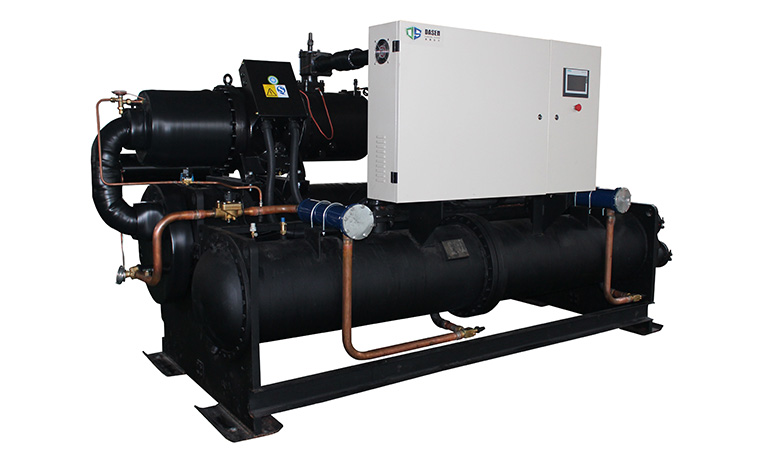A water chiller is a device used to lower the temperature of the water. Water-cooled chillers feature a water-cooled condenser connected to a cooling tower.
They are commonly used for medium or large installations that have a sufficient water supply. Water-cooled chillers may produce a more constant performance for commercial and industrial air conditioning due to the relative independence to fluctuations of the ambient temperature.
In hydroponics, where plants are grown without soil, the pumps, lights, and ambient heat may warm the reservoir water temperatures, and thus leading to plant root and health problems.
Water chillers may be used to lower the water temperature to below ambient level. For example, 68oF (20oC) is a great temperature for most plants, as it results in healthy root production and efficient absorption of nutrients.

When it comes to air conditioning, chilled water is commonly used to cool a building’s air or equipment, and this holds true precisely if many individual rooms must be controlled separately, like in a hotel, for example. A chiller lowers water temperature to between 40o and 45oF before the water is pumped to the location to be cooled.
So how does a water chiller work? Basically, a pumping system circulates cool water / water-glycol solution from the chiller to the process. This cool fluid removes heat from the process and the warm fluid returns to the chiller. The process water is the catalyst by which heat transfers from the process to the chiller.
Some water-cooled chillers range in size from 20-ton capacity to several thousand-ton models, which are typically used to cool large facilities such as airports, and shopping malls, among others.
This type of chiller usually resides indoors, in an environment protected from the weather. Thus, water-chillers offer a longer lifespan, than air-cooled chillers, for example. Water-cooled chillers often represent the only available option for larger installations, however, the additional cooling tower system will inevitably require additional installation expense and maintenance as compared to air-cooled chillers.
The above information is provided by water chiller manufacturers.
